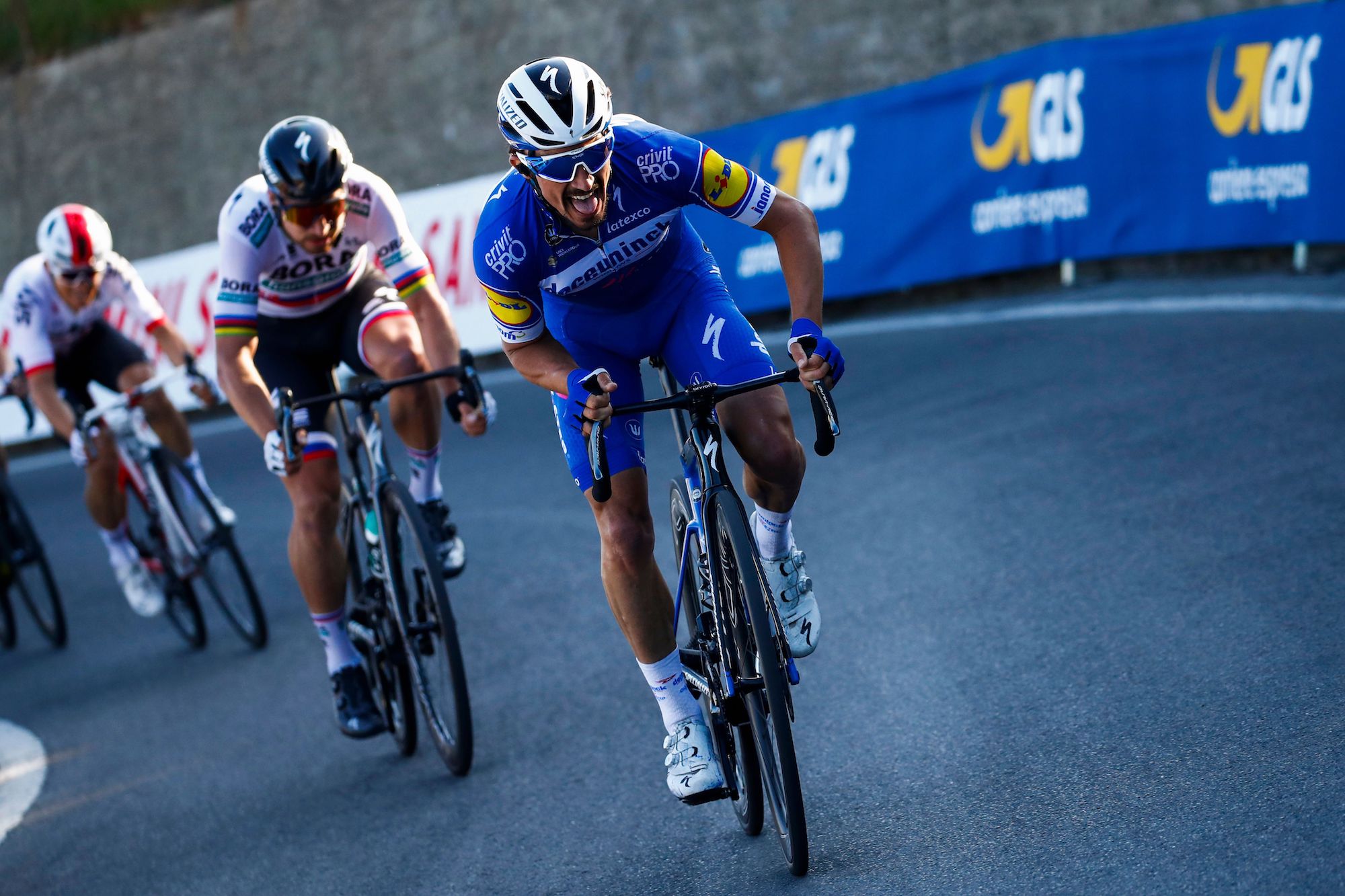Poggio climb has been repaired in time for Milan - San Remo 2020
Philippe Gilbert and Peter Sagan say they've ridden smoothly over the climb

Julian Alaphilippe attacks on the ascent of the Poggio during Milan - San Remo 2019 (Luca Bettini/AFP via Getty Images)
The Poggio will be ridden as normal during this year's Milan - San Remo, despite earlier fears the climb wouldn't be repaired in time.
In December, concerns were raised over the condition of the road following landslides on the climb, with authorities taking the decision to close the road due to the ground being unstable.
Reports later emerged of the mayor saying the total cost of the damage was €10 million, going on to tell officials in a meeting the race "could not be held".
This was because the expensive price tag would encourage local authorities to drag out the work, reported Belgian newspaper La Dernier Heure.
However, these fears have not materialised as the roads have been made accessible again.
Philippe Gilbert (Lotto-Soudal) and Peter Sagan (Bora-Hansgrohe) have also apparently confirmed the roads are back to normal, saying they had ridden smoothly over the climb during recent training trips.
The latest race content, interviews, features, reviews and expert buying guides, direct to your inbox!
Gilbert will be looking to complete his set of Monuments with a Milan - San Remo win, but will face stiff competition in former Deceuninck - Quick-Step team-mate and reigning champion Julian Alaphilippe.
The Italian one-day race, which features nearly 300km of racing, is the first Monument of the season, beginning in the Italian city of Milan before heading south towards the coastal city of San Remo.
It's also not the only classic that has faced fears over changes to its roads. One cobbled sector in Paris-Roubaix was partially paved over, adding smoother sections on each kerb, much to the displeasure of Sep Vanmarcke.
The climb, Poddio di San Remo, is 3.7km-long and average 3.7 per cent, with a maximum gradient of eight per cent near its summit.
Starting with 9.2km to the finish, the ascent has been the kicking off point for a number of unforgettable victories, including the winning breakaway that set up Julian Alaphilippe in 2019 and Vincenzo Nibali’s solo dive the year before.
Jonny was Cycling Weekly's Weekend Editor until 2022.
I like writing offbeat features and eating too much bread when working out on the road at bike races.
Before joining Cycling Weekly I worked at The Tab and I've also written for Vice, Time Out, and worked freelance for The Telegraph (I know, but I needed the money at the time so let me live).
I also worked for ITV Cycling between 2011-2018 on their Tour de France and Vuelta a España coverage. Sometimes I'd be helping the producers make the programme and other times I'd be getting the lunches. Just in case you were wondering - Phil Liggett and Paul Sherwen had the same ham sandwich every day, it was great.